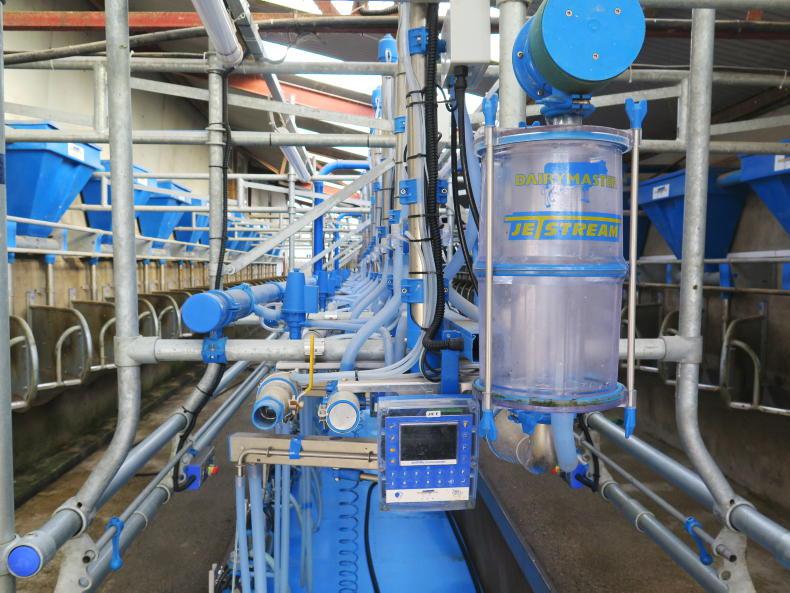After a record year in 2022 for milk price and farm profitability, there is no doubt that the dairy sector is facing into 2023 in a good position. Despite the high prices for milk, there are clouds on the horizon – market value for butter and whole milk powder has fallen, signalling that a drop in milk price in 2023 is now likely.
Other clouds include much tighter rules in the nitrates directive and what changes the climate action bill brings about remains to be seen. And, of course, the war in Ukraine continues to rage and who knows what the spring offensive will bring.
What impact these clouds on the horizon will have on the appetite for dairy farmer investment remains to be seen. Certainly, it didn’t seem to have much of an impact in 2022, with most milking machine suppliers reporting a busy season. Of course, dairy farmers investing in improved milking facilities is not just about expansion or growing numbers, there is always the need to improve efficiencies in existing set-ups and that’s not going to go away, even if expansion slows down.
On pages 36 and 37, we report from the 80-cow herd of Sean Kelleher in Macroom, Co Cork. Sean has more than doubled the size of his milking parlour from a six-unit to a 16-unit, installing a state of the art GEA parlour into a difficult site in the existing farmyard. He milked his first cow in the new plant in September and hasn’t looked back.
Meanwhile, Martin Merrick reports on the installation of a new Pearson plant on pages 38 and 39. Both case studies are examples of medium-sized herds investing in milking equipment and milking parlours to reduce the workload. For farmers of this scale, or indeed any scale, investing in labour-saving areas such as milking parlours will always be a good investment. Advice remains the same though – don’t overspend on areas with a low return and high maintenance costs.
After a record year in 2022 for milk price and farm profitability, there is no doubt that the dairy sector is facing into 2023 in a good position. Despite the high prices for milk, there are clouds on the horizon – market value for butter and whole milk powder has fallen, signalling that a drop in milk price in 2023 is now likely.
Other clouds include much tighter rules in the nitrates directive and what changes the climate action bill brings about remains to be seen. And, of course, the war in Ukraine continues to rage and who knows what the spring offensive will bring.
What impact these clouds on the horizon will have on the appetite for dairy farmer investment remains to be seen. Certainly, it didn’t seem to have much of an impact in 2022, with most milking machine suppliers reporting a busy season. Of course, dairy farmers investing in improved milking facilities is not just about expansion or growing numbers, there is always the need to improve efficiencies in existing set-ups and that’s not going to go away, even if expansion slows down.
On pages 36 and 37, we report from the 80-cow herd of Sean Kelleher in Macroom, Co Cork. Sean has more than doubled the size of his milking parlour from a six-unit to a 16-unit, installing a state of the art GEA parlour into a difficult site in the existing farmyard. He milked his first cow in the new plant in September and hasn’t looked back.
Meanwhile, Martin Merrick reports on the installation of a new Pearson plant on pages 38 and 39. Both case studies are examples of medium-sized herds investing in milking equipment and milking parlours to reduce the workload. For farmers of this scale, or indeed any scale, investing in labour-saving areas such as milking parlours will always be a good investment. Advice remains the same though – don’t overspend on areas with a low return and high maintenance costs.







 This is a subscriber-only article
This is a subscriber-only article










SHARING OPTIONS: